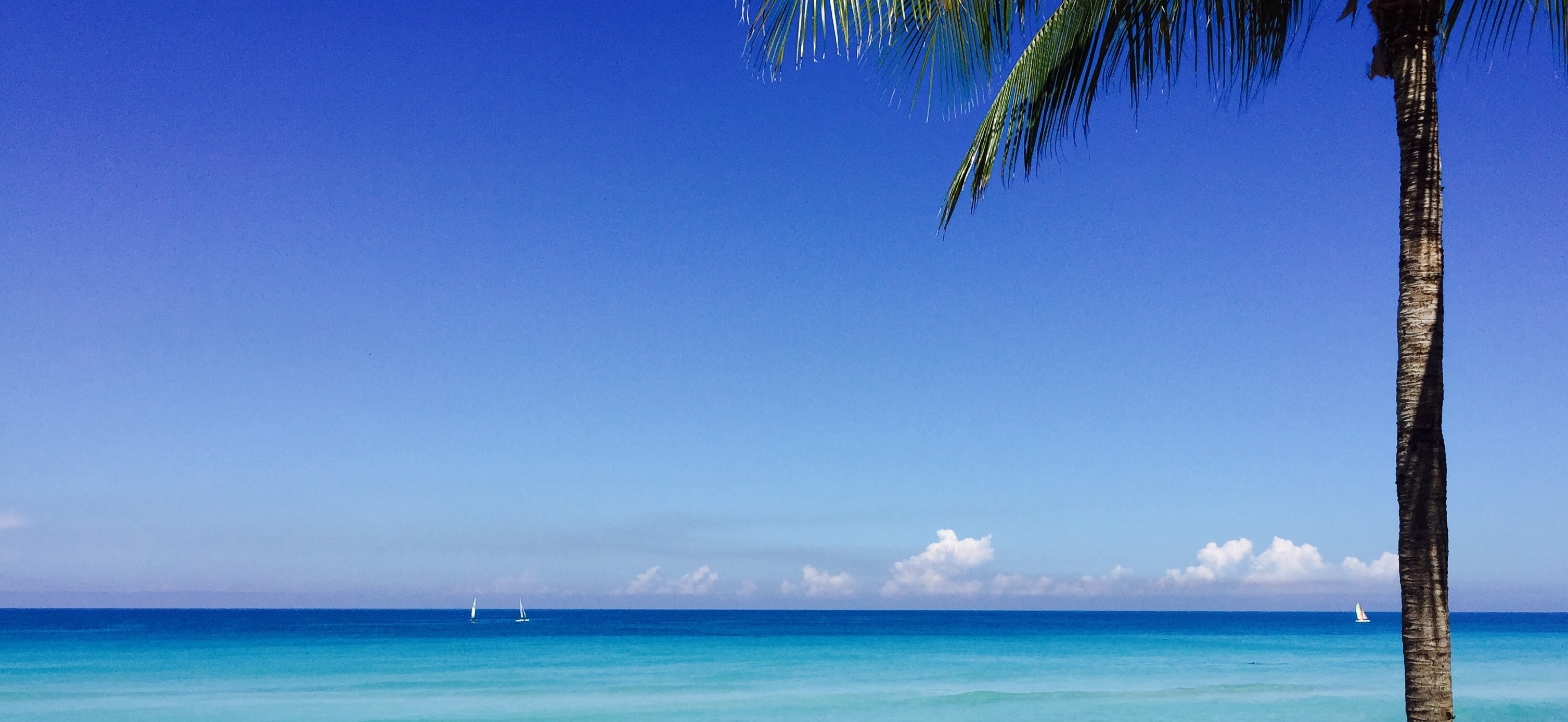After breakfast we were on our way to Jaipur – a colourful city with chaotic streets and a fabulous mix of old and new. Not even five minutes on the old city’s roads and we were dodging camels and elephants, with the ever-present dogs, cows and goats wanting in on the action.
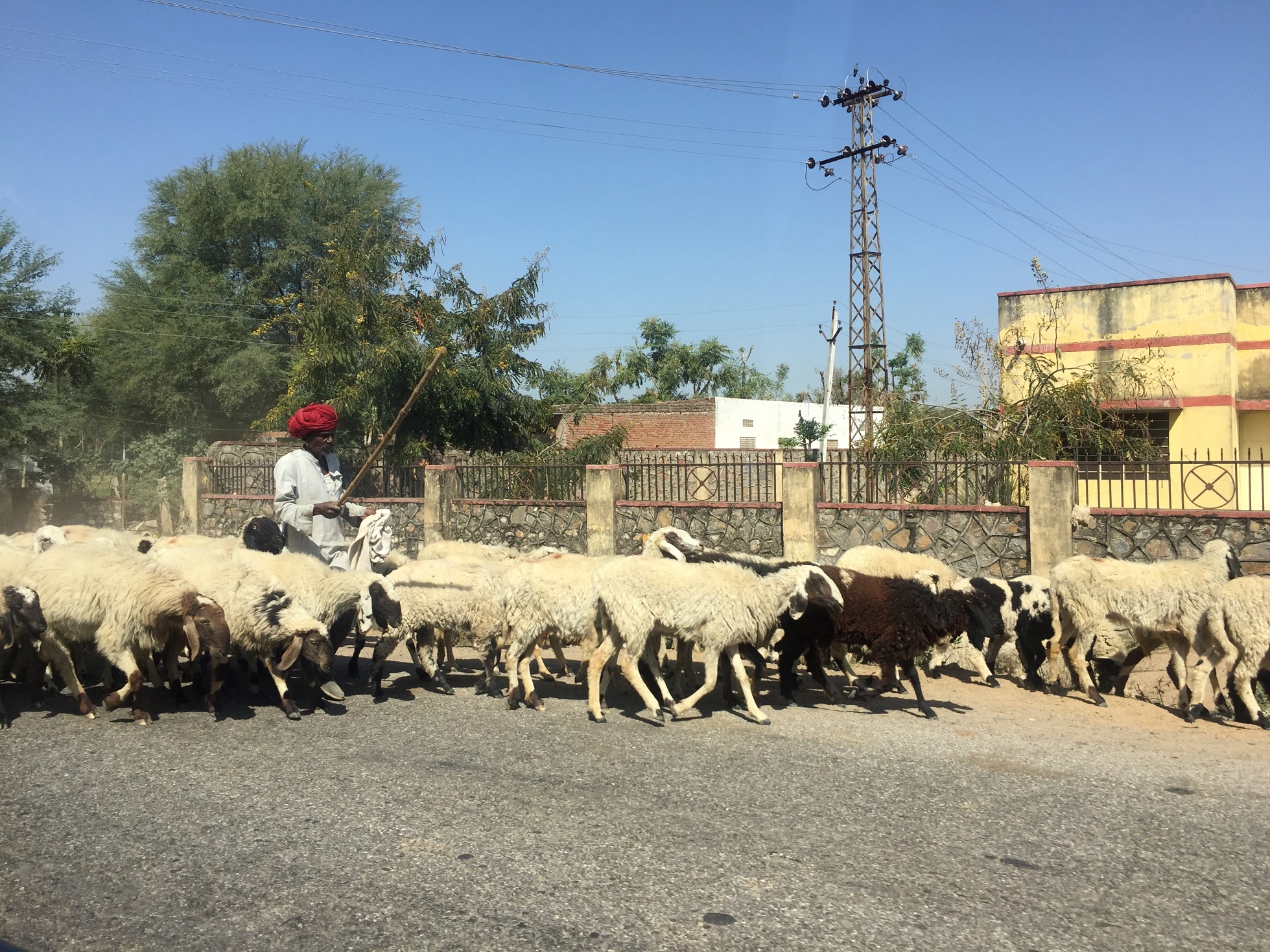
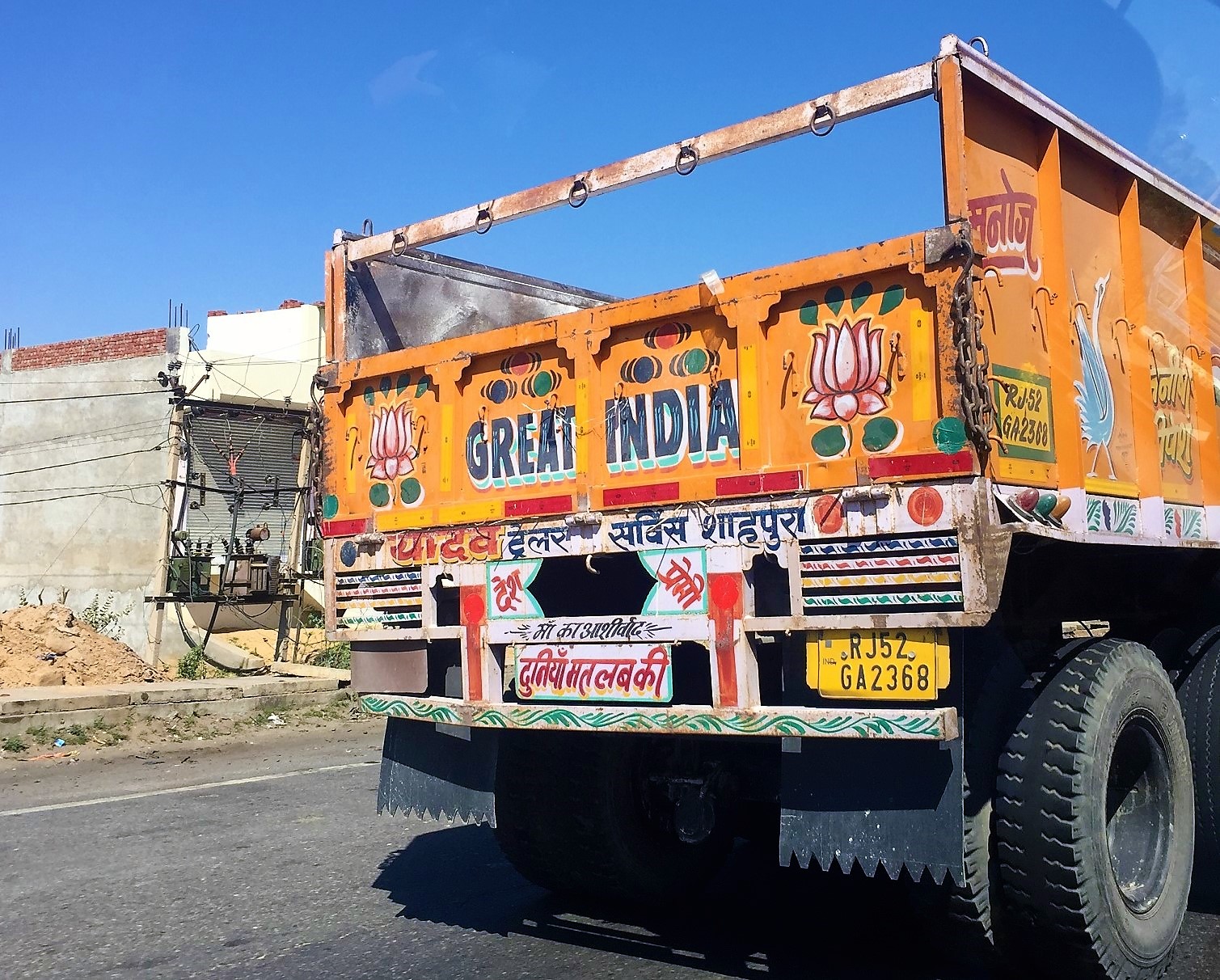
According to Raj, our driver, there is only one thing in India that is effective in stopping speeding drivers and yet is impervious to bribes and corruption – a cow in the middle of the road – the bovine traffic police.
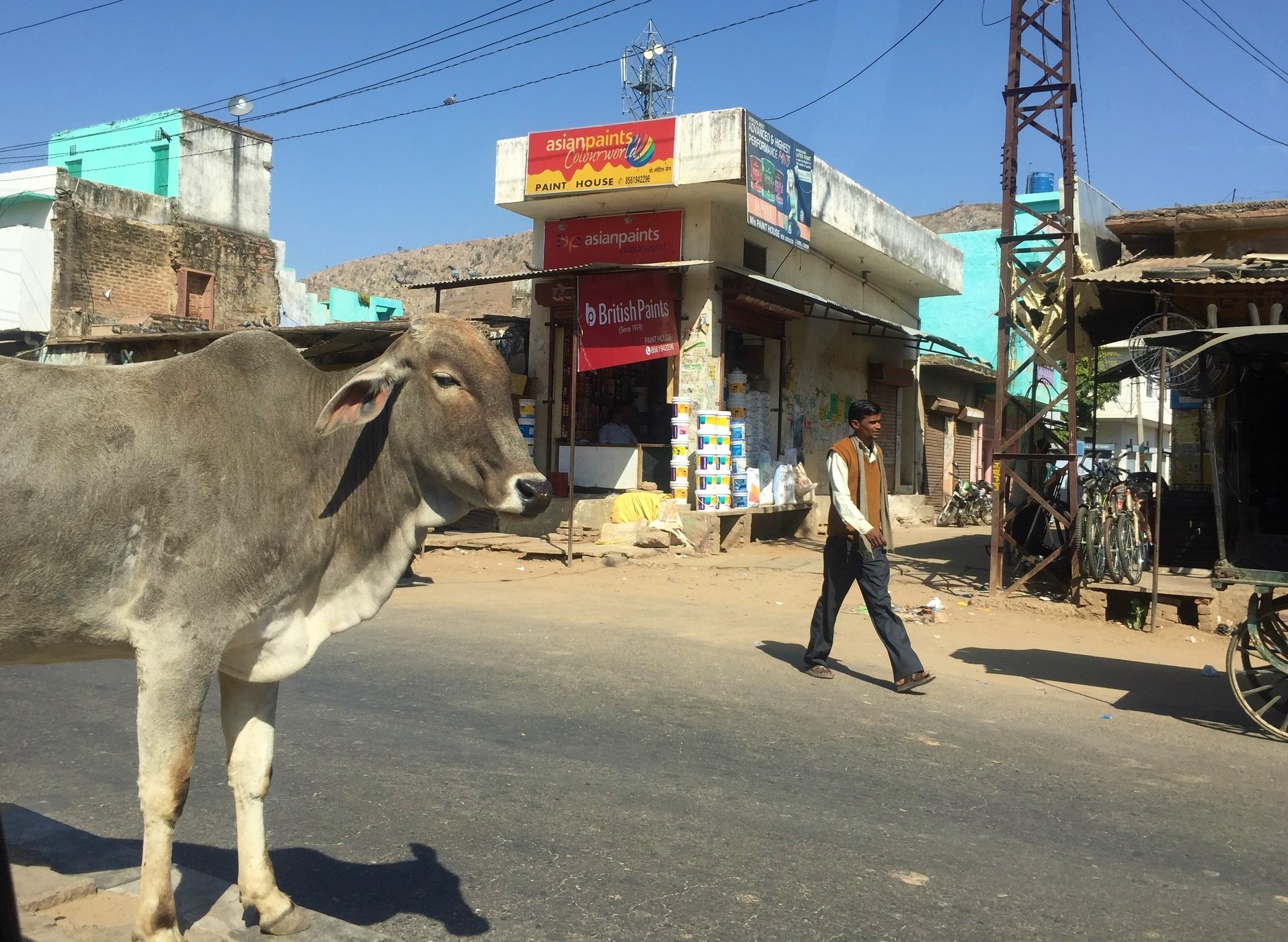
The local traffic police
Jaipur is interesting for many reasons, including the fact it was India’s first planned city, and it was painted pink (traditionally the colour of hospitality) to welcome the Prince of Wales (later King Edward VII) in the 19th century. Today, all residents of the Old City are compelled by law to preserve the pink facade.
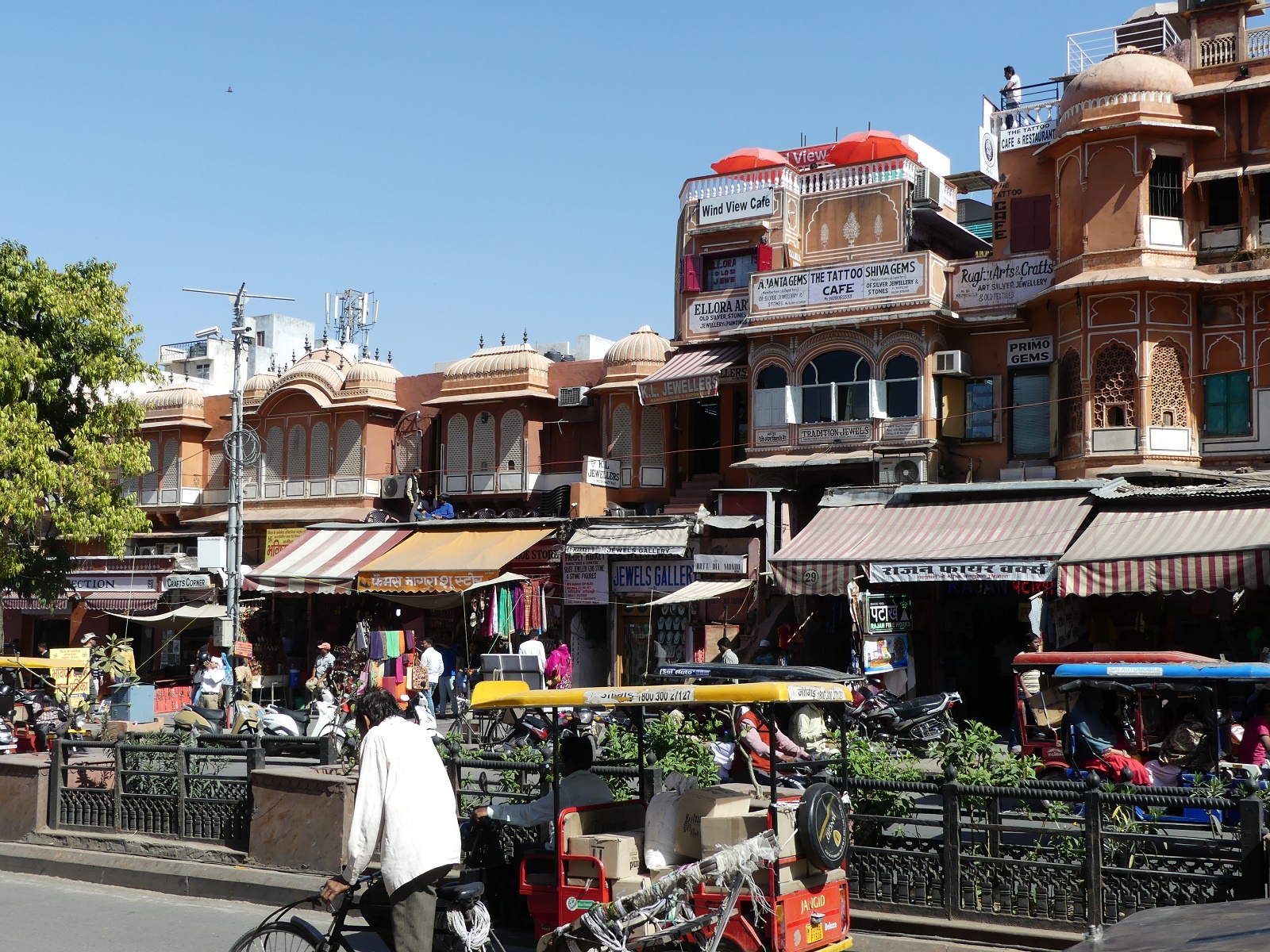
We had booked a guide today to help us make sense of Jantar Mantar, a royal observatory with a fascinating mix of gigantic sundials and other instruments for measuring the heavens, stars and position of the sun. This outdoor playground of devices includes the Samrat Yantra (the supreme instrument) which at 90 feet high is the world’s largest sundial. You can actually see the shadow move across the dial and it is accurate within two seconds.
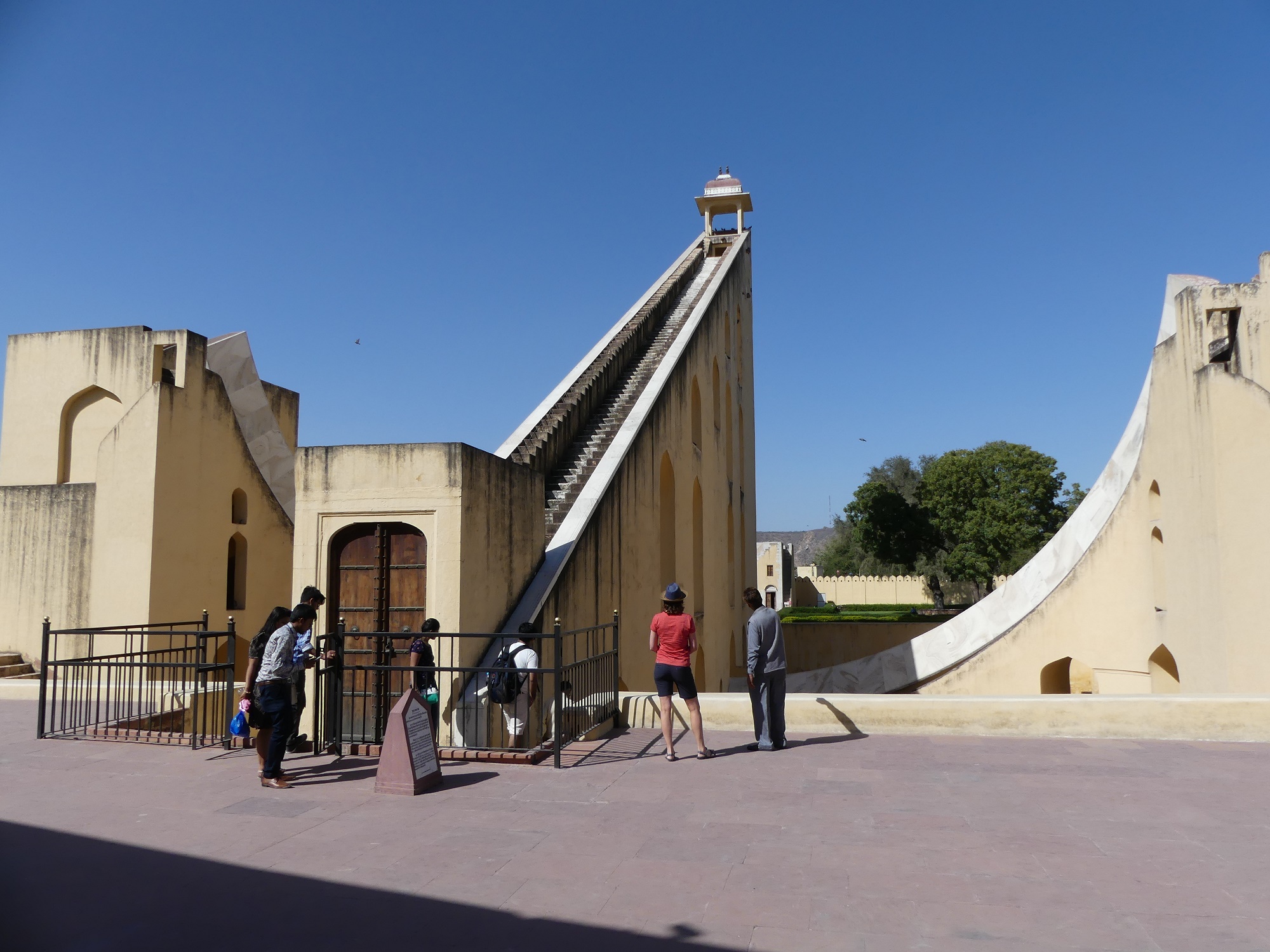
The world’s largest sundial
Our guide did a good job explaining how each fascinating instrument worked although he struggled when Derek quizzed him about the astrology aspect rather than astronomy. Derek could not understand why he doesn’t just do like most astrologers do and make the $#!£ up. (Derek’s words!)
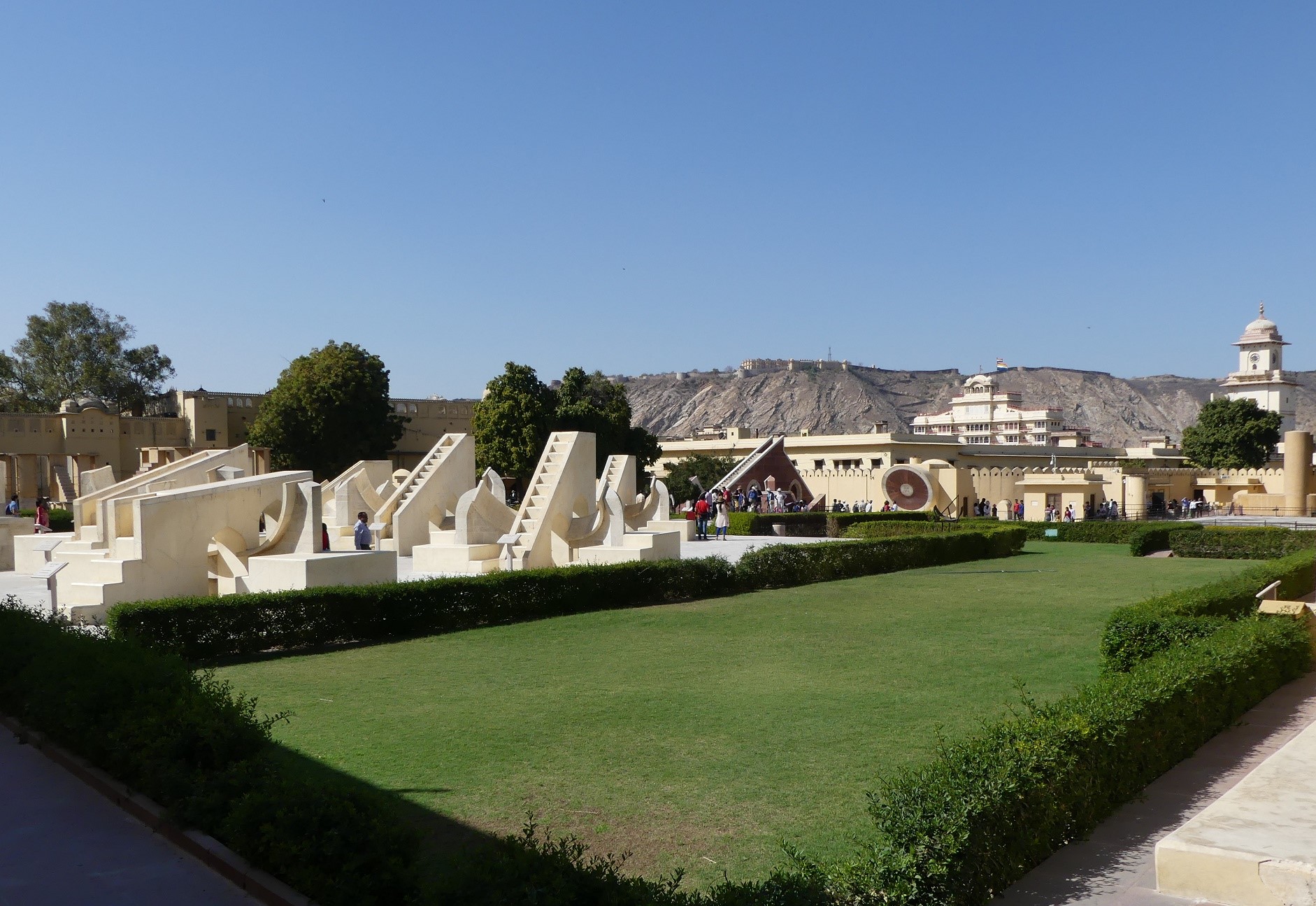
An astronomer’s playground
Our guide also showed us some of the other main sights in Jaipur, including the Hawa Mahal, the Water Palace and the City Palace as well sending us to the obligatory shops showcasing some stone polishing and another for Persian carpet weaving. Although both places were really interesting to see, particularly the handwoven carpets, we were never really going to be purchasing any wares no matter how small they claimed they could pack their goods.
The City Palace is a complex of courtyards, gardens and buildings and, despite an interesting history and architecture, it was sadly quite disappointing. We weren’t that interested in royal costumes, old carriages or traditional paintings. Only part of the palace is open to the public and is still used by the Rajastani royal family. Maybe they were keeping the best parts to themselves.
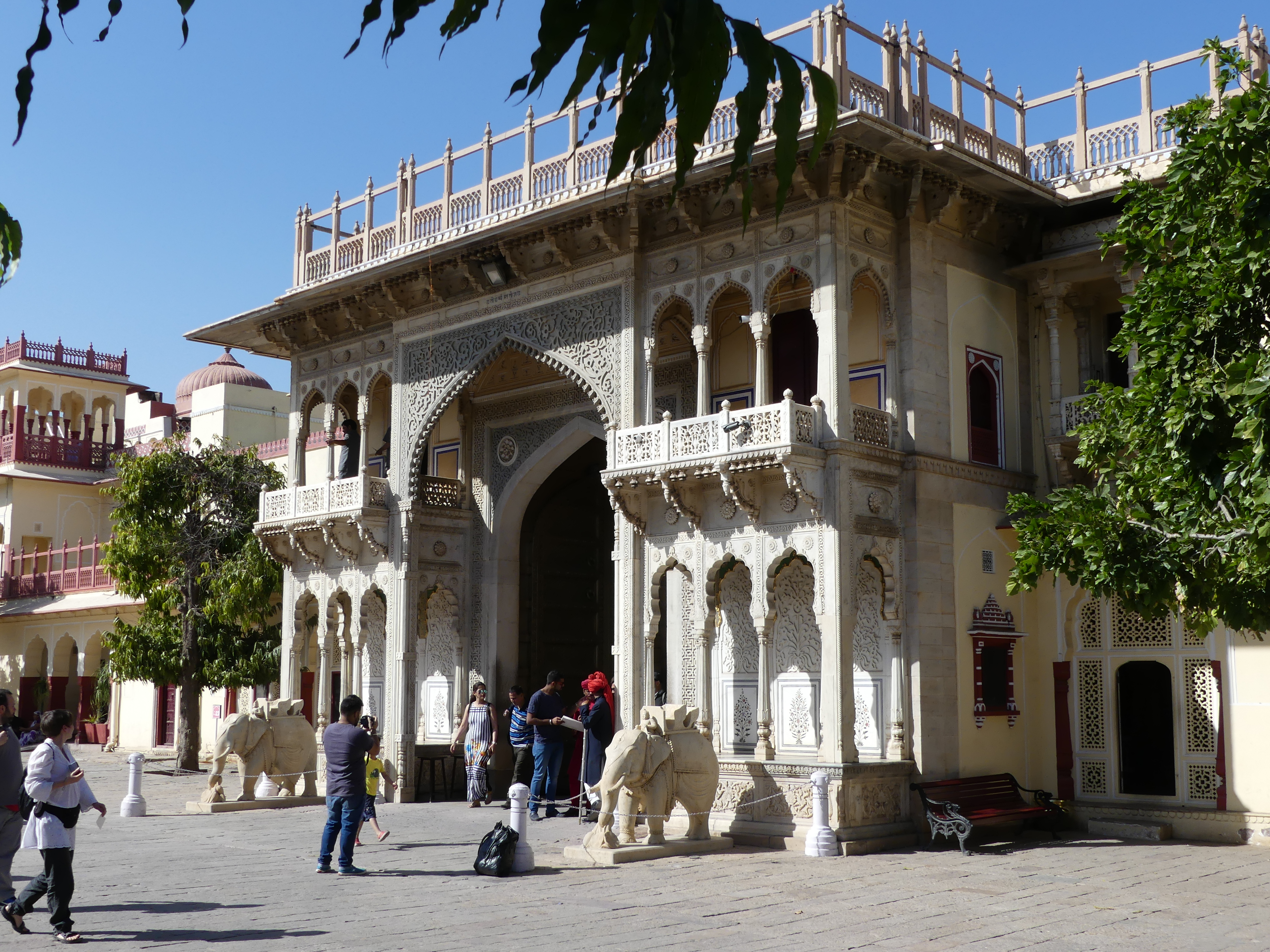
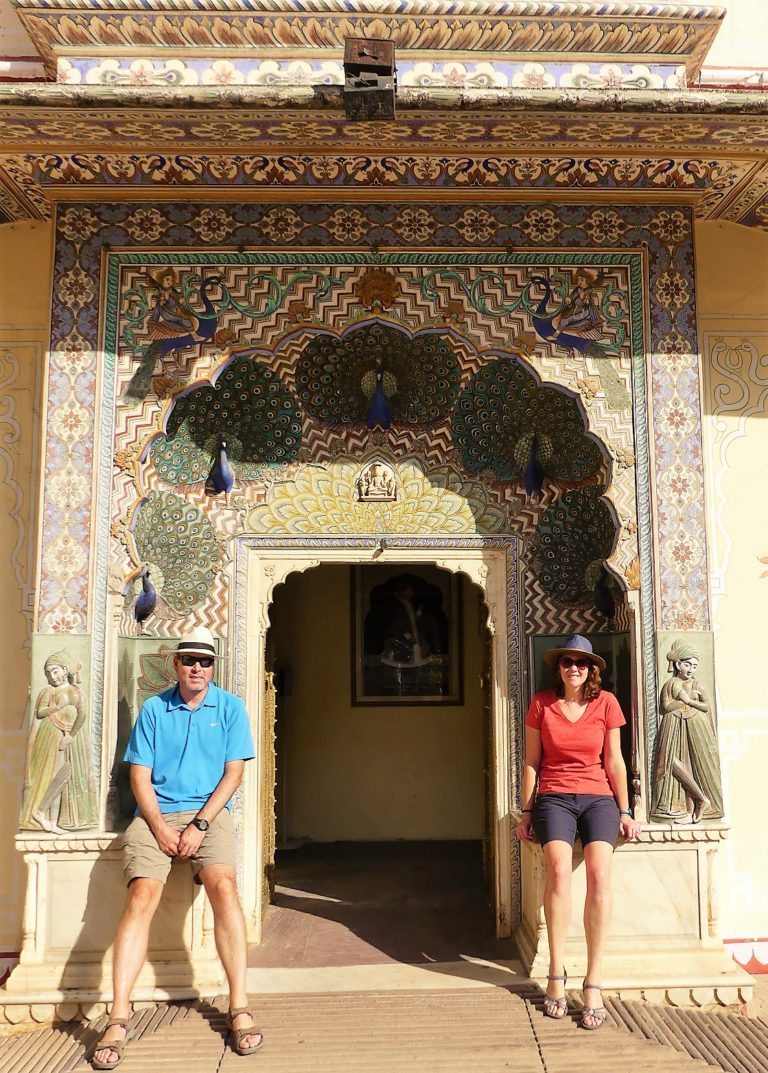
Posing at the Peacock Gate, which represents autumn and is dedicated to Lord Vishnu. There are four gates representing the four seasons and Hindu gods.
Hawa Mahal is considered Jaipur’s most distinctive landmark. It is an extraordinary, delicately honey-combed hive that is five storeys high. It was constructed to enable ladies of the royal household to watch the life and processions of the city without being seen themselves.
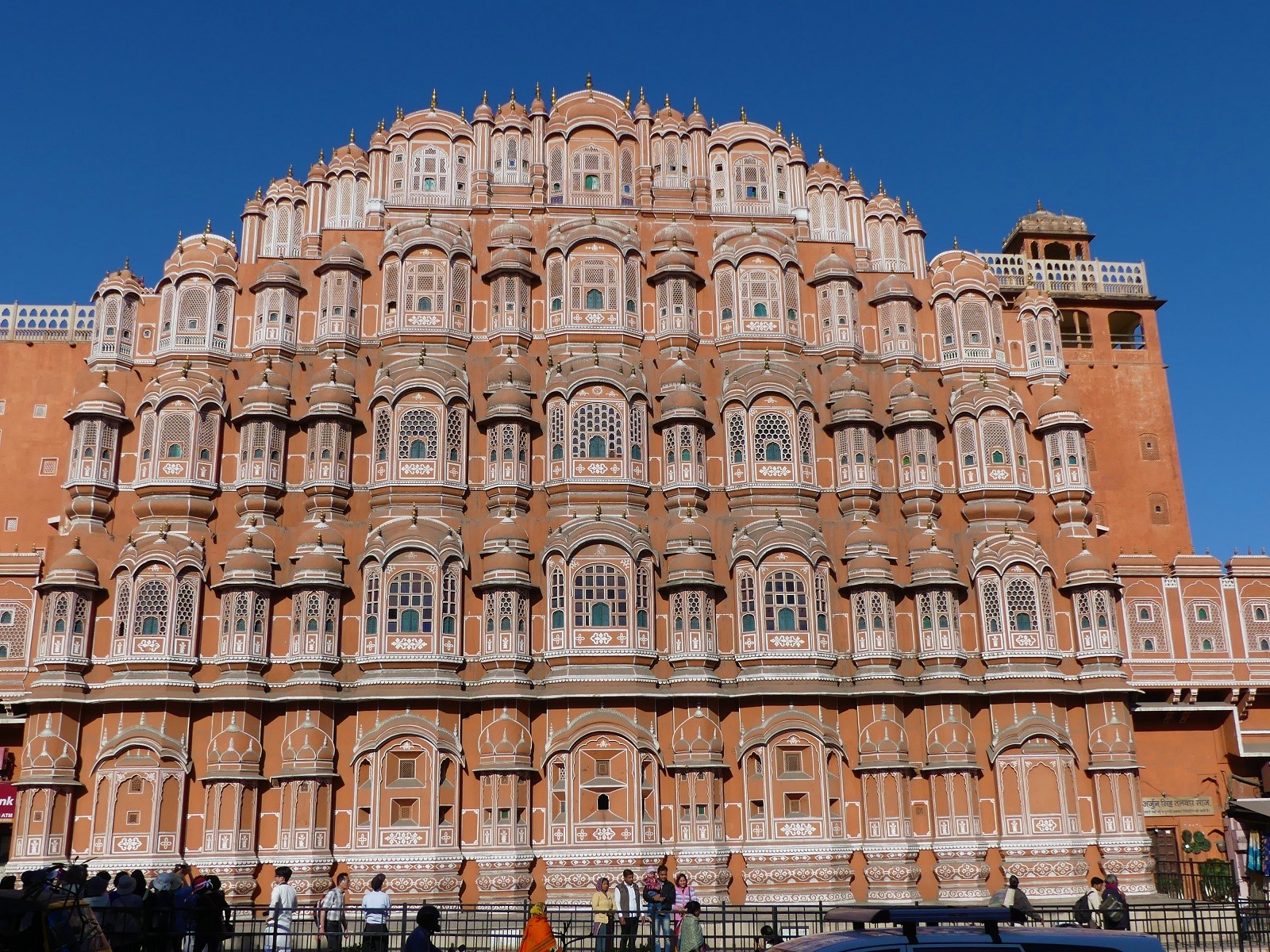
The Water Palace was picturesque but sadly it was also closed to the public. Apparently it is being converted into a hotel and restaurant complex by the government but no one seems to know when the conversion will be completed.
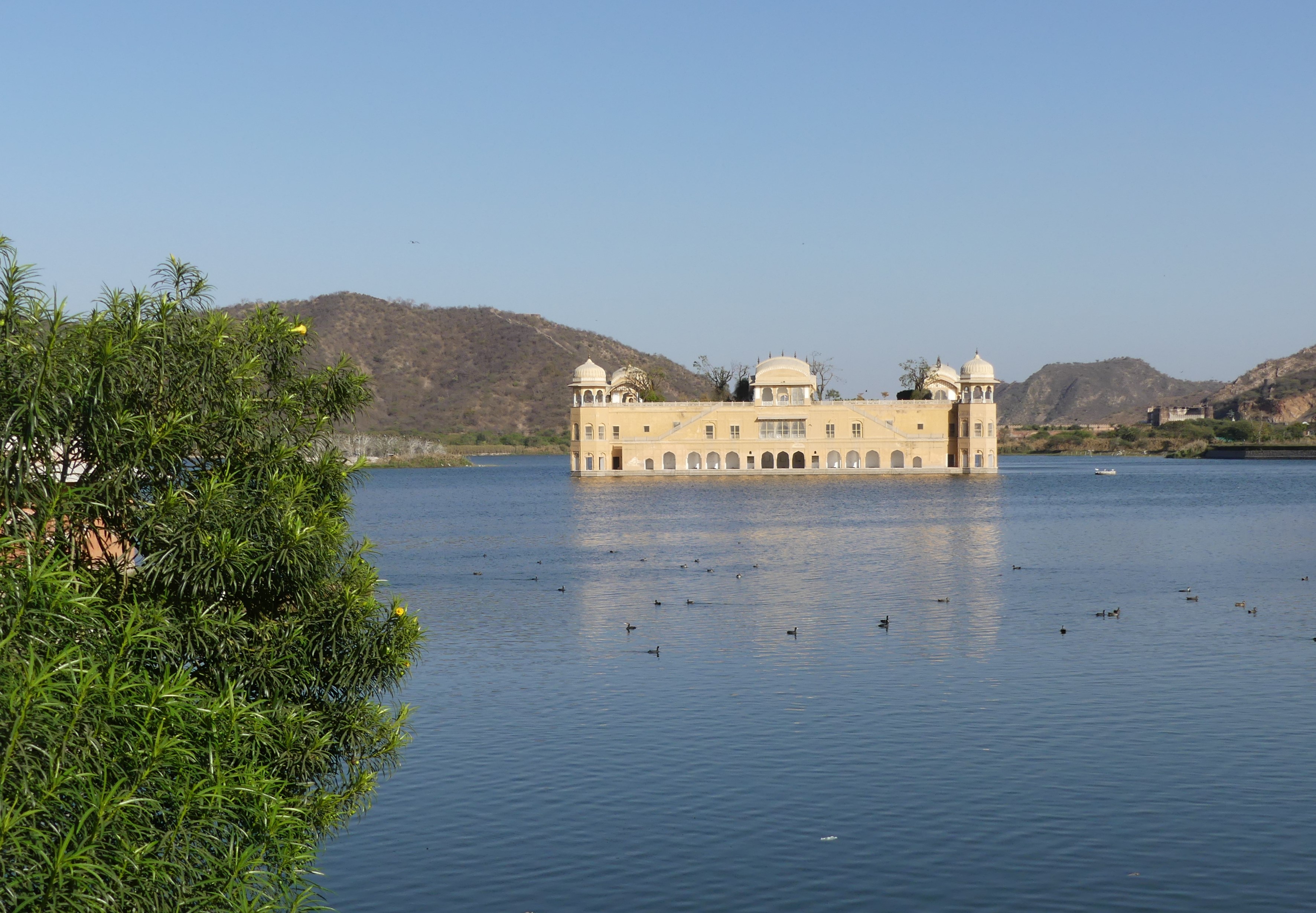
Our hotel, situated on a very dodgy side street, was around the corner of one of Raj’s best restaurant recommendations. Niro’s was known for some of the best Indian in town. To no-one’s surprise, Derek was less than excited about this prospect. Similar to our time in Buenos Aires we went for dinner way before anyone else in the city, so sat alone in the restaurant for pretty much our entire meal.
Derek at this stage had decided he was not only vegetarian, but also vegan. Apart from our first night in Delhi, neither of us has eaten any meat in India (mainly since we saw the chickens and goats out on the streets!). We had stopped eating the eggs and before we left we were on the brink of giving up milk… Reading up about Niro’s on TripAdvisor, everyone recommended their butter chicken or mutton dish. But alas, I opted for the mixed veg korma. It was mixed veg, right. Like the bag of mixed veg you get in Tescos. I should’ve gone with my gut and ordered the butter chicken! No surprises what Derek ordered this time… his mac ‘n cheese was pretty tasteless but at least he was happy.
Since we postponed Amber Fort to the following morning, we didn’t have a guide with us but we were both quite pleased about this. Having a guide means you always need to follow in their footsteps and have little opportunity to explore on your own. We also just wanted to enjoy discovering this beautiful place.
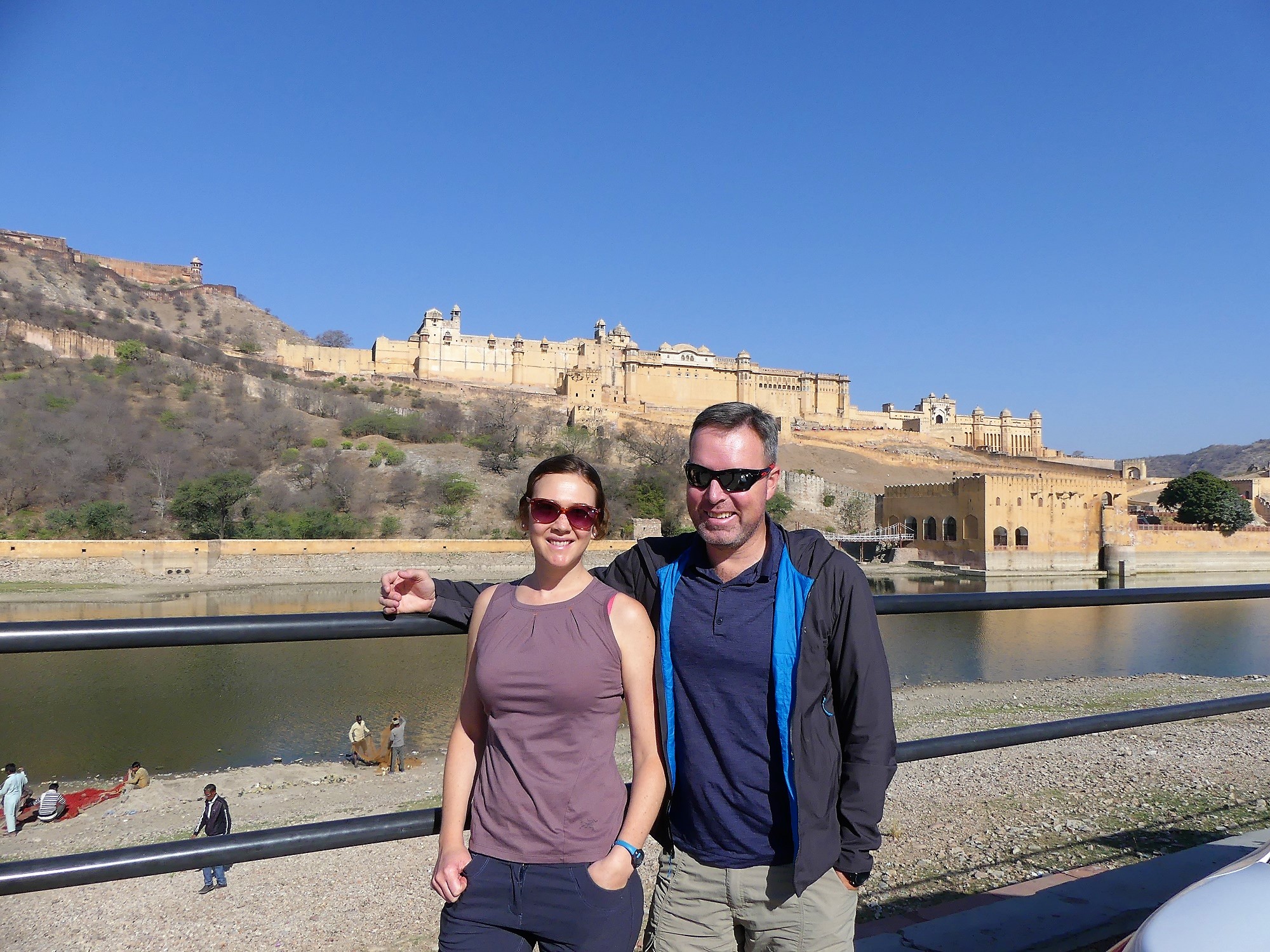
Derek clearly wasn’t touching anything… although he claims there was bird crap all over the rail…

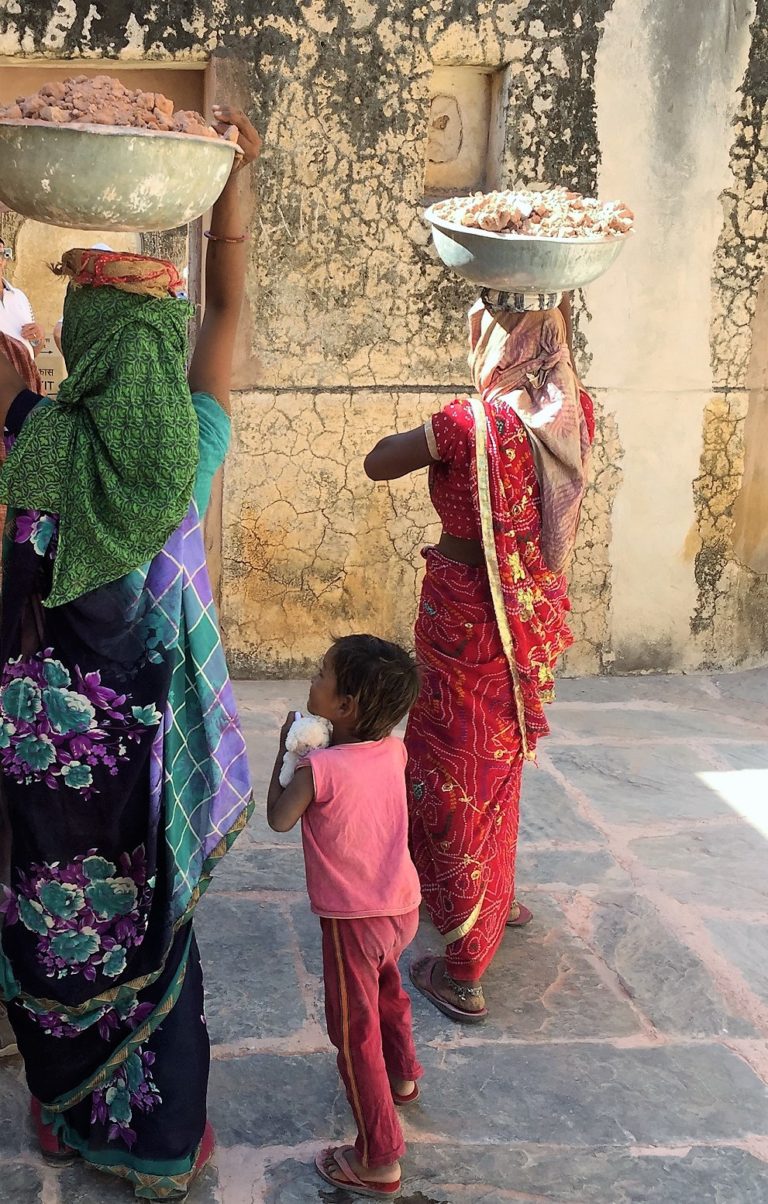 Amber Fort was probably one of our favourite sights. It was not only beautiful, but with hundreds of hidden alleyways and secret passages we loved exploring and discovering strange little rooms, balconies overlooking the lake and dodging all the tourists.
Amber Fort was probably one of our favourite sights. It was not only beautiful, but with hundreds of hidden alleyways and secret passages we loved exploring and discovering strange little rooms, balconies overlooking the lake and dodging all the tourists.

While we probably missed out on some of the history and interesting facts without a guide, we really enjoyed being on our own, trying to imagine what this place looked like hundreds of years ago.
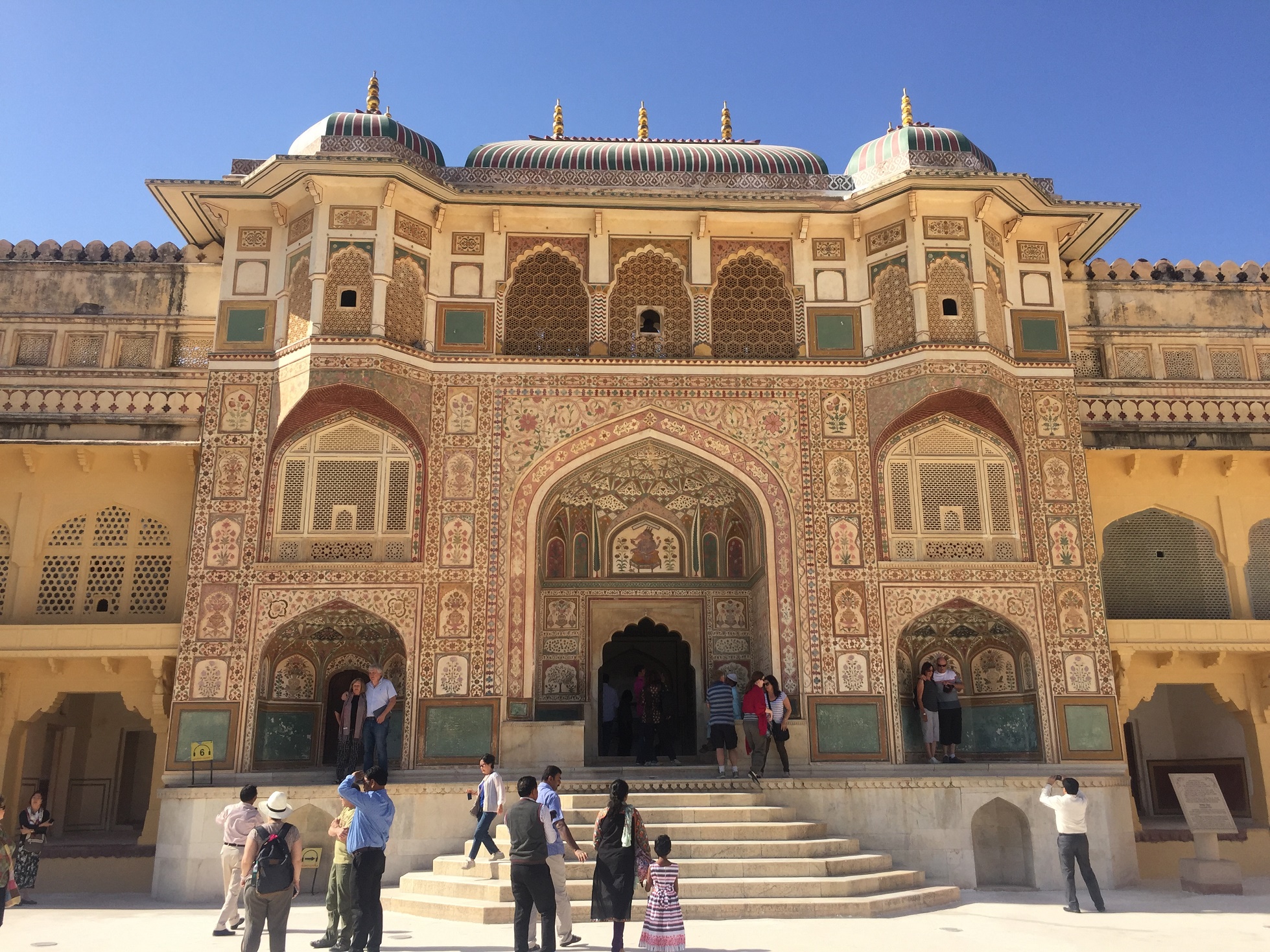
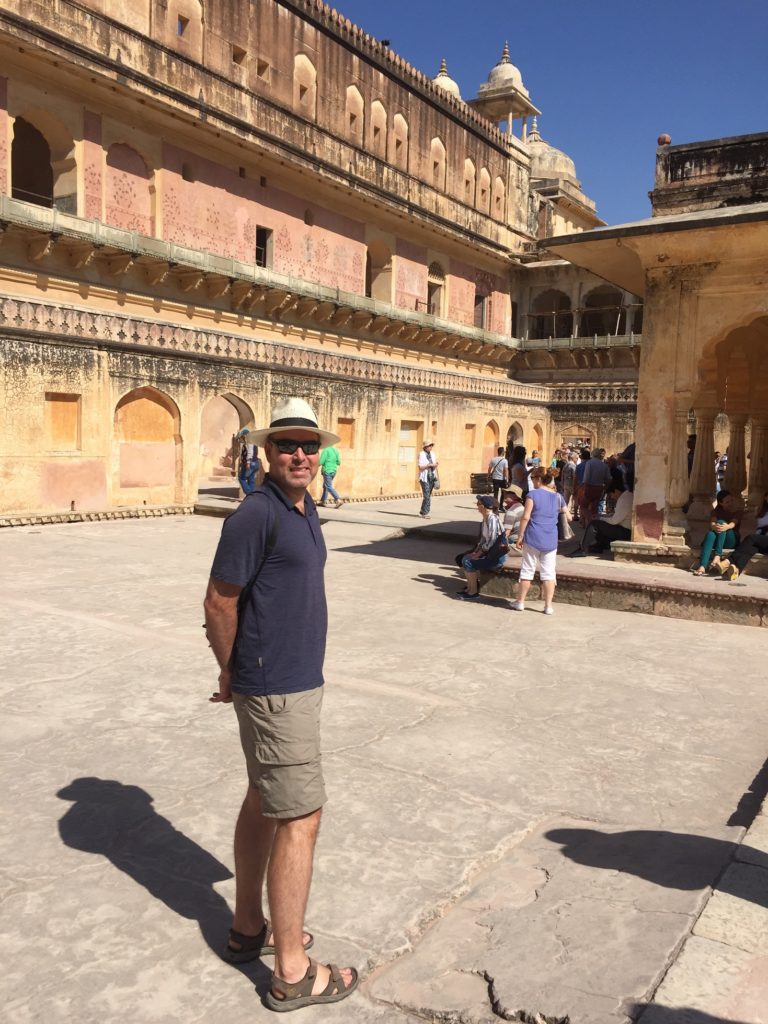
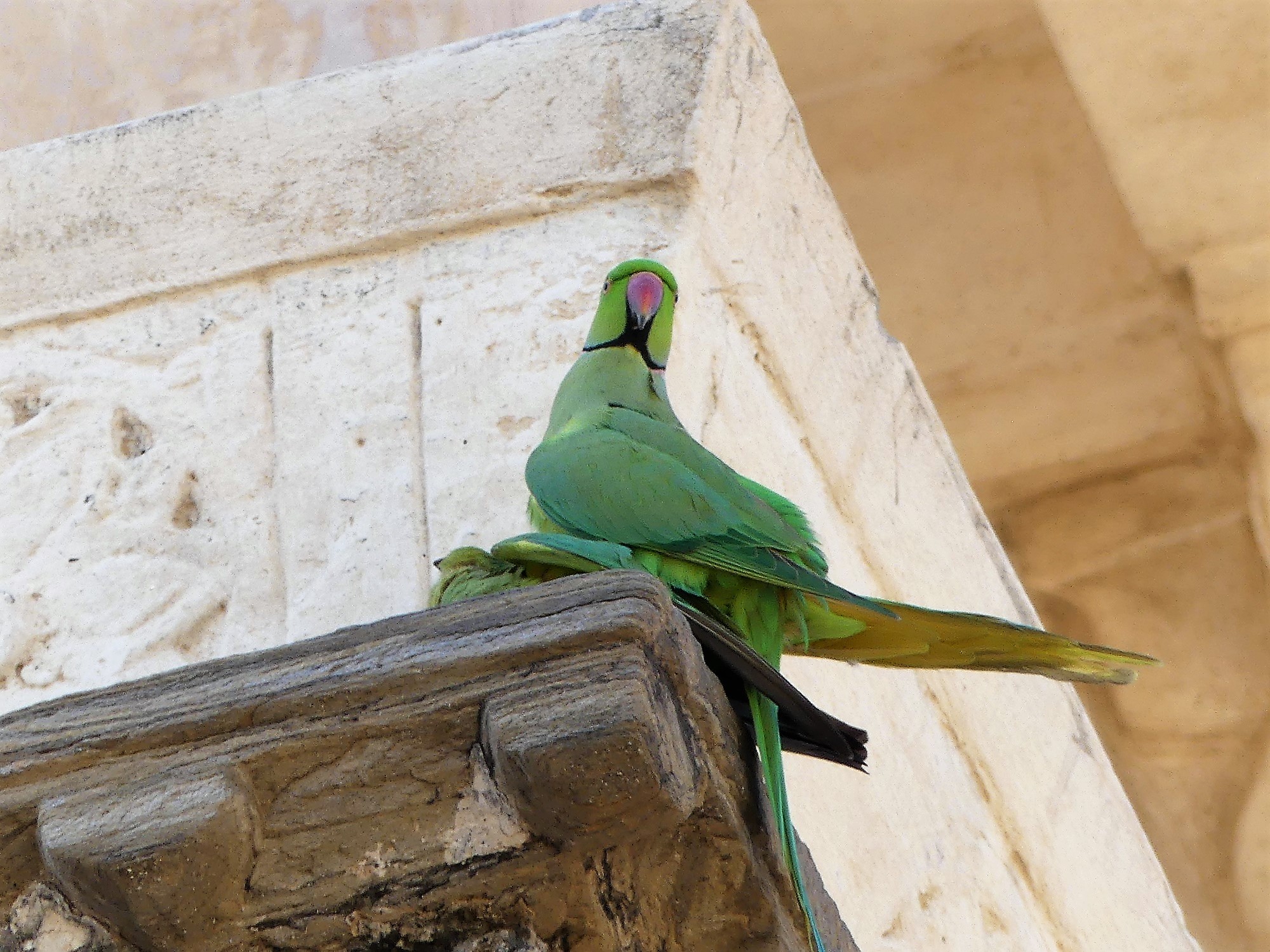
I guess this place is as good as any other to engage in romantic manouvres
The magnificent beauty of the fort was, however, scarred by the sad and disturbing tourist attraction leading up to it. Most tourists pay to go up to the fort on elephant back – a route that is easily done on foot. Seeing these majestic animals with painted faces, taking tourists up and down, up and down, is extremely sad and not something we were remotely willing to support. This was just another example where commercial value needlessly outweighed the welfare of a wild animals.
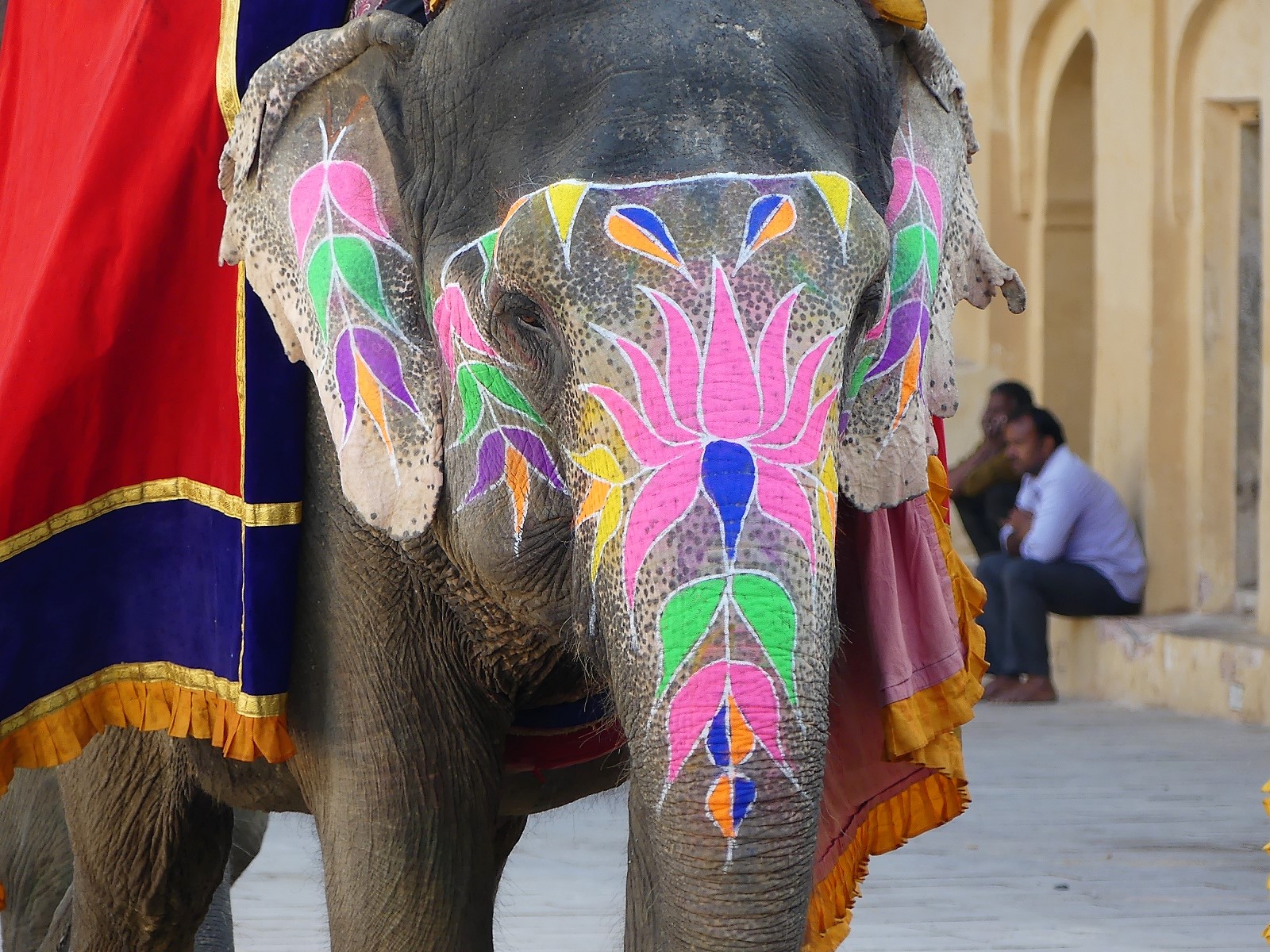
Seeing these majestic animals with their faces painted was incredibly sad
